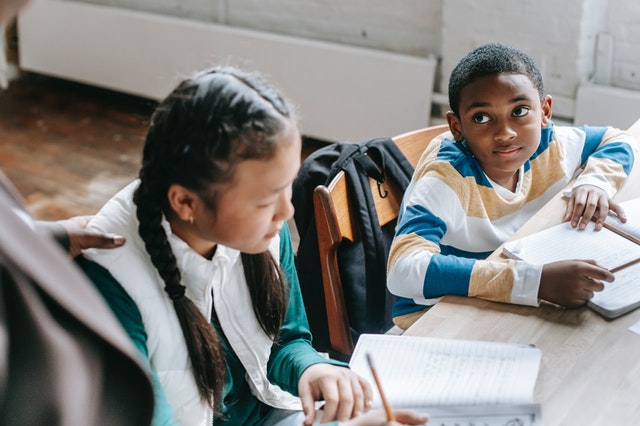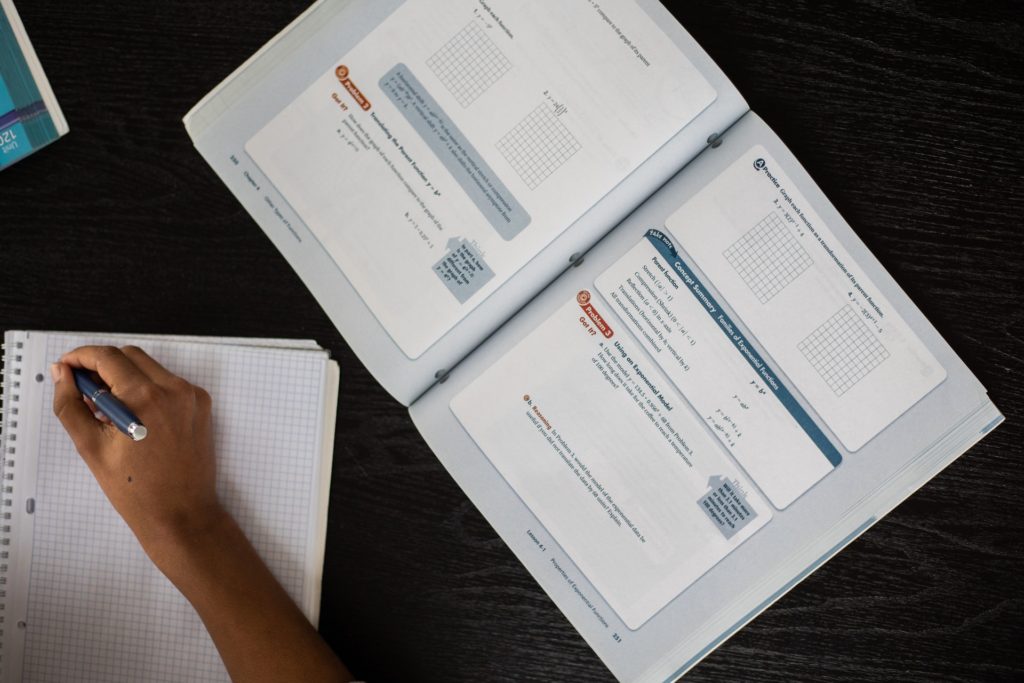Table of Contents
Teaching can seem like a daunting career choice, but once over the first year hurdles, it gets a lot easier. Your first year can seem difficult because you won’t yet have tons of materials collected for lesson planning and you may not know what classroom practices will be appropriate for keeping the class calm, quiet, and focused. With a little preparation from this first year teacher guide however, new teachers can actually be some of the most impactful teachers due to their fresh passion for teaching and their openness to new ideas.
This guide will give you a clear checklist of things to prepare beforehand and keep in mind during your first days as a first year teacher, but it is important to remember that no one is perfect immediately. Teachers, just like in the advice they give their students, should just focus on trying to improve each lesson and get a little better each day.
Questions for First Year Teachers to Consider
Who was your favorite teacher?
What qualities did they possess that you would like to emulate in your classroom?
Write a clear list and perhaps include their photo before hanging it up somewhere visible to inspire you each morning before starting class.
5 Teaching Tips for First Year Teachers
Teaching is less about doing a perfect job and more about getting things done. Just like students aren’t expected to be perfect, neither is the teacher. Make manageable goals for each day and remember that if you don’t get everything finished, that’s ok, you’ll always have tomorrow with your students.
Take each day as it comes, and then at the end of the day, take stock of what worked, what didn’t, and what you want to try tomorrow. Just go step by step, and start with the basics.
1: Start with learning names
It can seem daunting to try and learn all of the students’ names, and it won’t come immediately. Take the first few days of school to do get-to-know-you activities or games. Not only will this help you to learn names and get comfortable with your new class, it will help your students to do the same. There will be many of them that are just as nervous and who would benefit from time spent getting to know their peers and you as a teacher.
There is no need to rush straight into content since, as research shows, relationships are an important foundation to education. When students know and feel supported by their peers and teacher, they’re going to be more able to focus on learning instead of social dynamics. In addition to this, the relationships you build at the beginning of the year can be used to help students through difficult times or behavioral challenges.

Not all of the games and activities have to be large group games run by the teacher. Taking some time for table groups or seat partners to get to know each other can also be important as they may be working together more closely, at least until a seating change.
This can also be a good time to begin introducing some basics of the course and give a few anticipation questions. For example, if you’re teaching a literature class, you might have students share their favorite stories, or discuss what impact literature has in their lives or in the world at large.
As pairs or table groups get to know one another, take your seating chart around and start matching faces to names. Say the names in your head multiple times as you look at the student. Don’t worry about trying to hide this or be subtle about it. The kids will appreciate that you’re trying to learn their names and they’ll notice the effort you’re putting in to get to know them as an individual even from day one.
2: Set clear transition and quieting procedures
Activities and group projects will always have some level of noise, and that’s totally fine, but eventually you’ll need to quiet the class down to be able to move on to the next steps or give clarifying instructions.
In order to do this, it is important to come up with a quieting procedure that is agreed upon as a class. The teacher should not just yell over students as research shows that actually using a quieter voice is better, not only for the teacher’s vocal chords, but also the students so that they don’t try to talk louder over the teacher as they finish up their sentences.
Doing something simple like flicking the lights on and off or having a simple call-and-answer will help clearly signal to students when it is time to move on. With younger students, having a fun call like “Hand on top” where students answer “That means stop!” while putting their hands on their heads can help to quiet voices as well as stopping students from working so that they can focus on listening.
The older the students get, the less they’ll respond to these call-and answers. Keeping it simple like saying “Marco” to a response of “Polo”, using the lights, or even just raising a finger and students putting up theirs in response will work better for older students.
Whatever procedure you choose, this must be explicitly taught to the students in the first day or two. Especially with younger students, this can be part of the relationship building where it can be billed as a game to see who can learn it the fastest, but even with older children it is important to have a list of classroom behaviors that everyone agrees to. Writing them down together and perhaps even having students sign agreements can help them to take the rules more seriously and make them seem less arbitrary.
If students are a part of making the rules and putting them up at the beginning of the year, when behavior slips, the teacher can point to the rules that everyone agreed to, rather than rules just being whatever the teacher says, which might come across as arbitrary to the students who can’t always understand. This will make things feel more fair to students and also gives the teacher something firm to stick to when kids try to push boundaries.
3: Kids test boundaries and that is part of growing up. Be firm, but kind.

Part of growing up as a child is learning what is appropriate and what isn’t. Try not to let students misbehavior get to you, even though it almost certainly will at some points.
When students try to push boundaries the first time, give them a kind warning, but if they do it again, ensure you give a firm and even stern reminder of behavior expectations. Remember to refer to the classroom agreements you all signed as that will give an external reference for the students to focus on rather than the interpersonal dynamic between teacher and student.
Always keep to your word so that students have clear understandings. If you give three final warnings to one student, but only one to another, it will feel, and honestly be, quite unfair.
Kids are very perceptive and know a lot more than they often let on. They often keep track of things and it can cause more drama in discipline if firm expectations aren’t held.
Punishments feel terrible for a teacher, but in the end, it will be far more frustrating to try to juggle all of the dynamics of discipline if rules bend and change all of the time depending on the day or student. If you say it, stick to it. This goes with punishments as well as rewards.
One way to make discipline clear and visual, especially for younger students, is to have a reward system using tickets or beads. When students do something well, complete work, or behave kindly, they receive a ticket.
These tickets can be used on special days to purchase rewards or play games, whatever the teacher wants to make up. The tickets can also be taken away as a punishment. Some teachers feel that these types of rewards should never be taken away, and instead the teacher should talk a student through their behavior rather than disciplining them because of research on the efficacy of praise over punishment.
While it would be nice if the teacher always had the time to have long one on one discussions about students’ behavior, this is utopian thinking. This type of research is often conducted in laboratory settings that don’t mirror a real classroom.
In addition to this, the real world has consequences and once they leave school the consequences can be quite severe. If students never receive consequences in school, they will end up being entitled and realize that the teacher is all bark and no bite.
A quick look at any teaching forum will show that classroom behaviors are a huge problem for many teachers and teachers often don’t feel respected. This is due to the previously held best practices where students were coddled from any sort of bad feeling. Students need to be able to navigate realistic and fair systems of reward and consequences and not only receive praise regardless of their behavior.
4: Project Based Learning
One of the best ways to minimize discipline is to reduce the amount of time where misbehavior is likely. Expecting students to listen to hour-long lectures while sitting in rows is very outdated and research shows that students learn best when actively participating in the learning process through discovering, researching, and applying what they learn rather than just being told answers and plugging them into tests.
Instead of designing long slide shows full of lecture notes for students to copy, make up just a few slides to introduce topics, show some inspiring videos, and give instructions for activities. Then, try to move on to letting the students get to work on those activities.
While this may take a lot more time than just telling students what you want them to learn, the learning will stick much better when the students have to work to figure it out and then apply it in a practical context. Some projects can be short, and some longer, but lecture time should be kept to a minimum.
At first, this may feel a bit awkward for the teacher as it can sometimes feel like you’re “not doing anything”, but actually this approach requires quite a bit of activity from the teacher. While students are working independently or in groups, the teacher should be actively circulating, taking notes on student dynamics and behaviors as well as giving individualized help and guidance.
Research shows that students learn best when they have one on one time with the teacher due to the same principles of why having a lower student teacher ratio is best. This allows teachers to individualize their style of teaching for how that student understands best and challenge highly able students by pushing them beyond what others are working on.

5: Take care of yourself!
While teachers should always be thinking about how best to take care of their students, what best to plan for lessons, and why they’re teaching what they teach, teachers often struggle to pay attention to the other important person in the room. Teaching can be a very mentally taxing job and burnout is very common.
Teachers who work hard at school and then bring tons of work and stress home often never take time to recharge so that they have full batteries to bring their best back into the classroom. If one student is having a bad day, it will affect their learning and can sometimes affect others around them, but when the teacher begins to struggle, it is a guarantee that even the strongest students’ learning will be compromised.
While it may feel selfish to take time for yourself, it actually is an act of care to the students as well because a happy and energetic teacher can impart that same energy to their students. Even taking a whole day off really won’t hold the students back that much and may make a world of difference for a frazzled teacher.
This time away gives students a chance to work on some fun activities, work with a different adult, and perhaps even learn to independently progress without their hand being held. Then, when you return the following day, the students might even be more grateful to have you back and not take your help and guidance for granted.
Teachers are truly the lynchpin of the classroom, so you need to remember that what you bring to the classroom will impart not only wisdom to students, but also teach them how to care for and treat themselves and others when they get older.
Being a good model of how to deal with frustration and how to speak with others will help the students themselves see how they should work with their peers. Teachers who yell, get upset, and fall apart will lead to the students having this type of behavior normalized for them, but if they see a teacher who deals with their frustration in a healthy way and takes time off when they need, they’ll be better prepared for their own struggles in life as well.
Checklist for First Year Teachers
- Print out or have ready an easy to carry seating chart for learning names.
- Decide on one or two clear quieting/transition practices to utilize.
- Bring a large piece of paper for writing down and agreeing on classroom norms.
- Have some projects/activities planned for the first few days or even weeks.
- Schedule time each day or week for a bit of self care.
Sharing Ideas
One of the most useful teacher resources you can ever have is the creative minds of other teachers in your school. Make sure to regularly check in with other teachers to get ideas for class projects, troubleshoot problems, and sometimes to vent a little bit. Whether another new teacher or a veteran, each other professional at your school will have a plethora of new ideas to offer.
In addition to this, part of self care is making sure that you have a social support system at school. Having a bit of a venting session can help you to see that you’re not the only one struggling with issues. Isolation is one of the worst things for a teacher. Make sure to have at least one or two other teachers you can confide in, steal ideas from, and just chat with to recharge. Remember that you’re never alone!
Want more like this? Make Lab to Class a part of your weekly professional development schedule by subscribing to updates below.
References
Anderson, Amy R et al. “Check & Connect: The Importance Of Relationships For Promoting Engagement With School”. Journal Of School Psychology, vol 42, no. 2, 2004, pp. 95-113. Elsevier BV, https://doi.org/10.1016/j.jsp.2004.01.002.
Becker, Wesley C. et al. “The Contingent Use Of Teacher Attention And Praise In Reducing Classroom Behavior Problems”. The Journal Of Special Education, vol 1, no. 3, 1967, pp. 287-307. SAGE Publications, https://doi.org/10.1177/002246696700100307.
Bradbury, Neil A. “Attention Span During Lectures: 8 Seconds, 10 Minutes, Or More?”. Advances In Physiology Education, vol 40, no. 4, 2016, pp. 509-513. American Physiological Society, doi:10.1152/advan.00109.2016.
Deci, Edward L. et al. “A Meta-Analytic Review Of Experiments Examining The Effects Of Extrinsic Rewards On Intrinsic Motivation.”. Psychological Bulletin, vol 125, no. 6, 1999, pp. 627-668. American Psychological Association (APA), https://doi.org/10.1037/0033-2909.125.6.627.
Moore L.C., Shirdon S. (2021) Shifting the Interaction Order in a Kindergarten Classroom in a Somali-Centric Charter School. In: Warriner D.S. (eds) Refugee Education across the Lifespan. Educational Linguistics, vol 50. Springer, Cham. https://doi.org/10.1007/978-3-030-79470-5_16
Parks, Louise. “Sensory Overload: Quieting The Noise In Early Childhood Classrooms”. Childcare Quarterly, Spring, 2018, Accessed 23 Oct 2021.


